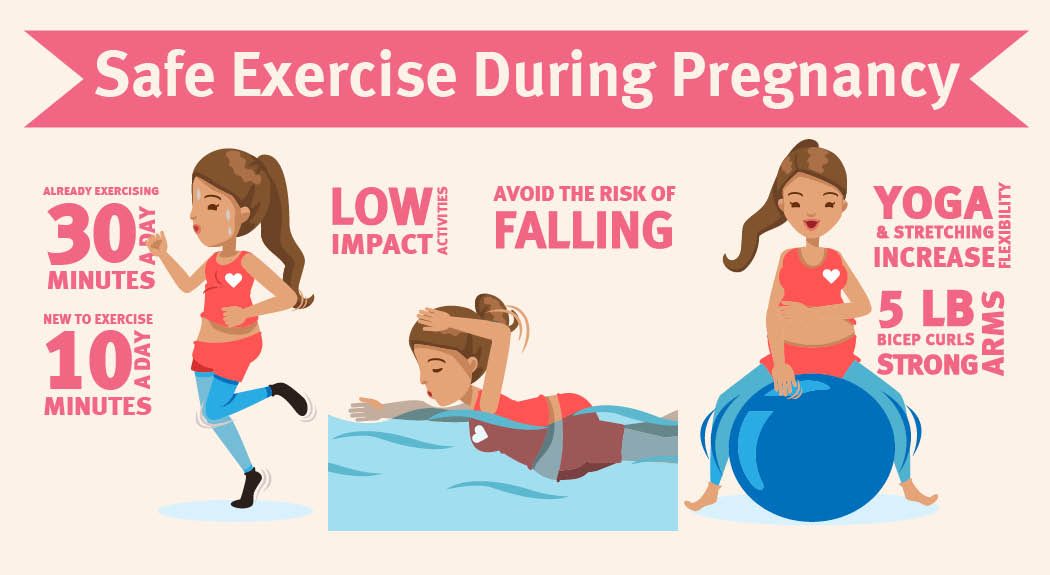Years ago, doctors recommended rest and limited activity to expecting moms as they progressed through each stage of pregnancy. While you should always check with your health care provider on what would be best for you and your baby, staying active during your pregnancy has shown to ease back pain, improve your mood, and prevent the risk of gestational diabetes and pregnancy-induced high blood pressure. Exercise will also help you maintain a healthy weight during pregnancy and may reduce your risk for a Cesarean section.
Physical activity will not increase your risk of miscarriage, low birth weight or early delivery. But there are some safety tips you should keep in mind:
- If you’re new to exercise, your heart rate should stay below 150 bpm.
- Stay well hydrated before, during and after exercise.
- Eat a snack or drink juice 15-30 minutes before you exercise.
- Stop if you become dizzy, short of breath or experience any bleeding.
- Do not exercise outside when it is very hot or humid.
As your body makes room for your growing baby, you may wonder which exercises are safe during each trimester.
First Trimester
I wouldn’t start training for a marathon just yet, but if you are able to work through the first-trimester morning sickness and fatigue, going for a brisk walk is a great exercise during this stage. But if you’re just getting started, walk 10-15 minutes a day and gradually increase to a 30-minute walk 3-5 times a week.
For women without pre-existing health conditions, moderate activity does not have heart rate limitations. This is especially true for women who were exercising prior to pregnancy. If you were highly active before getting pregnant and remain healthy, you can continue.
Second Trimester
Has your morning sickness and fatigue decreased? You may find you have more energy in your second trimester. However, as your joints begin to loosen, you are at a greater risk for injury (like sprains and strains).
At 14 weeks, we recommend avoiding activities like skiing, contact sports, karate and other activities that increase your risk of falling. You may continue with walking, swimming and pre-pregnancy exercise as long as it isn’t high-impact or lifting weight over 25 pounds. Prenatal yoga and stretching can also be very beneficial and help increase your strength and flexibility as you prepare for childbirth.
Third Trimester
The best workouts for your third trimester are swimming, walking and biking in a reclined exercise bike. Prenatal yoga is still a good option for this stage as you get ready to deliver your baby. If you’re continuing with weight resistance exercises, it’s okay to lighten the load. Modifying bicep curls to about 3-5 pounds will still help keep your arms toned.
Some women work out through the end of their pregnancy, but some may stop. Either way, it’s important to listen to your body and talk with your doctor. Patients with the following conditions should especially ask their provider before starting exercise: heart and lung conditions, cervical problems, low-lying placenta, high blood pressure later in pregnancy, and vaginal bleeding and cramping.
As always, it is best to discuss any questions or concerns with your obstetric provider.
Need a reminder? Download your Safe Exercise During Pregnancy infographic now.
 Frederick Guckes, MD, is an OB-GYN at Anne Arundel Medical Group Annapolis OB-GYN. You can schedule an appointment with him by calling 410-573-9530.
Frederick Guckes, MD, is an OB-GYN at Anne Arundel Medical Group Annapolis OB-GYN. You can schedule an appointment with him by calling 410-573-9530.





